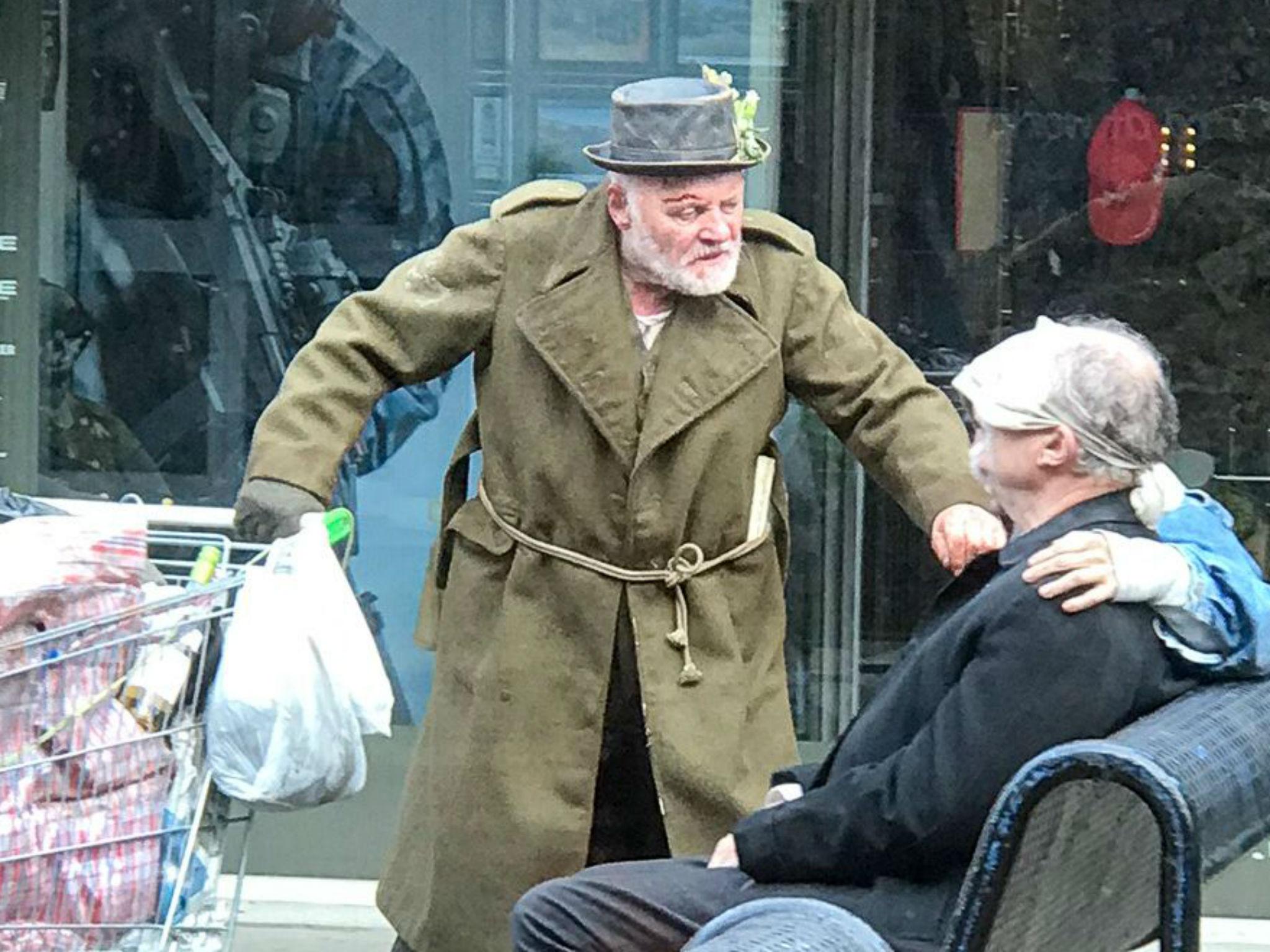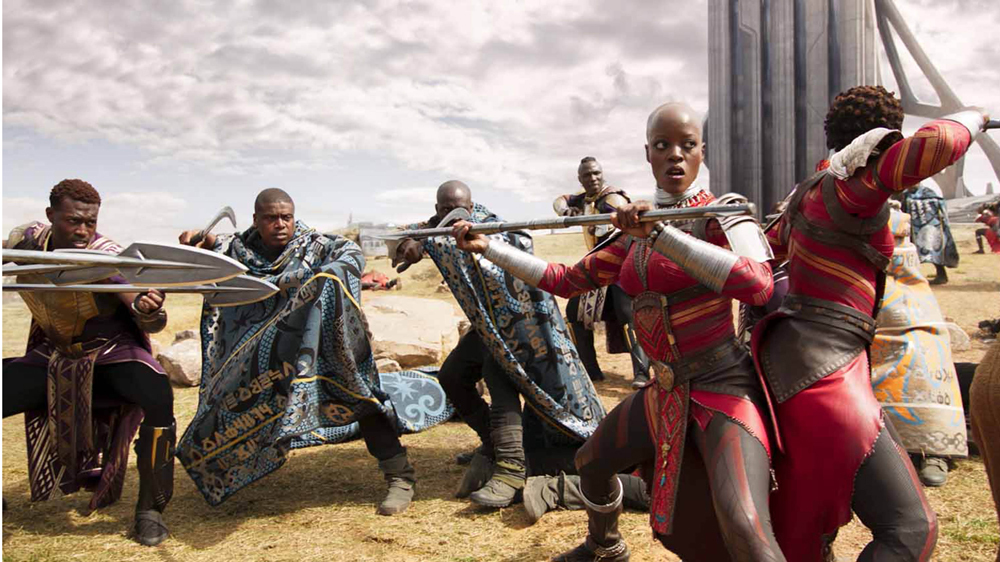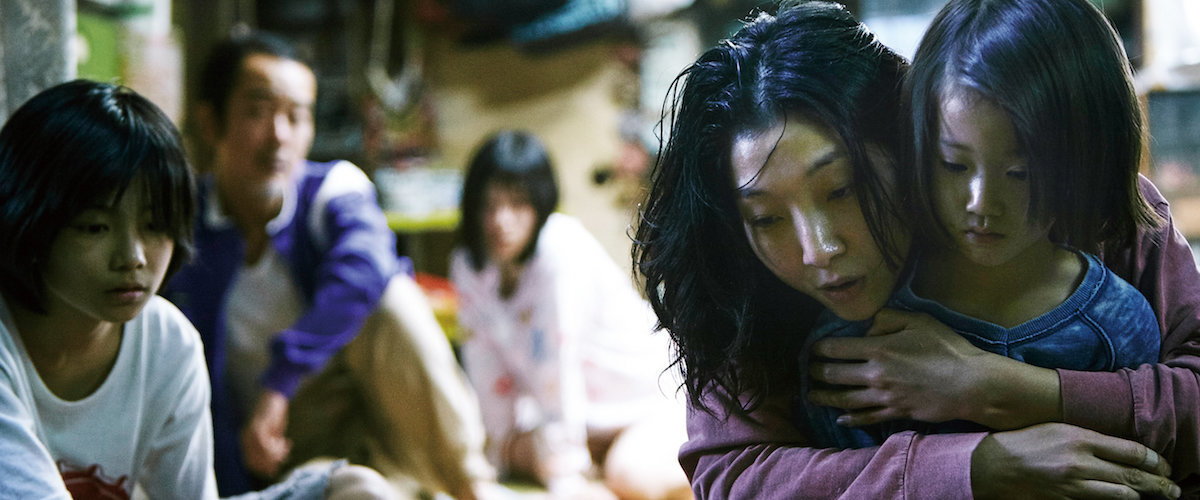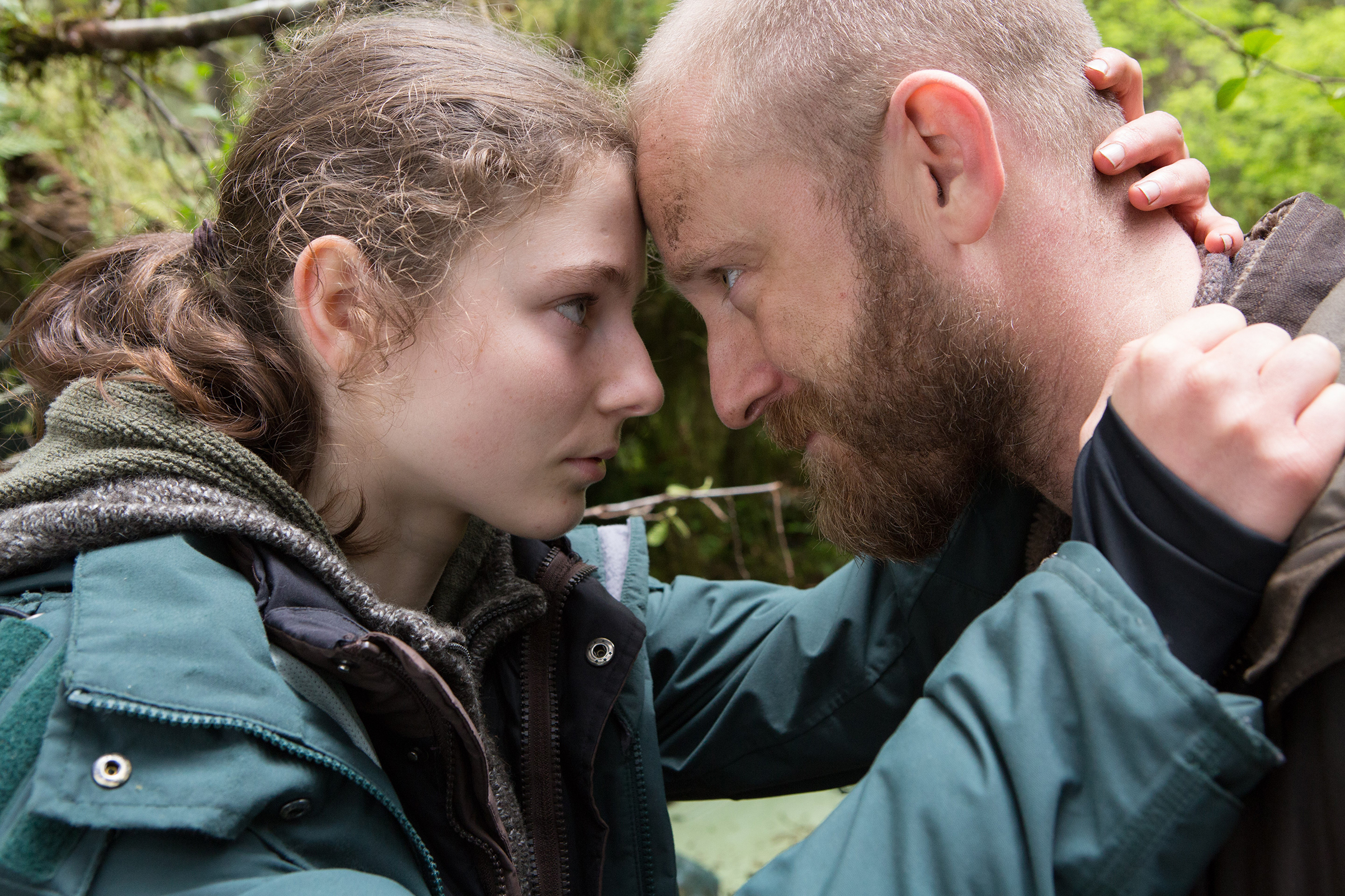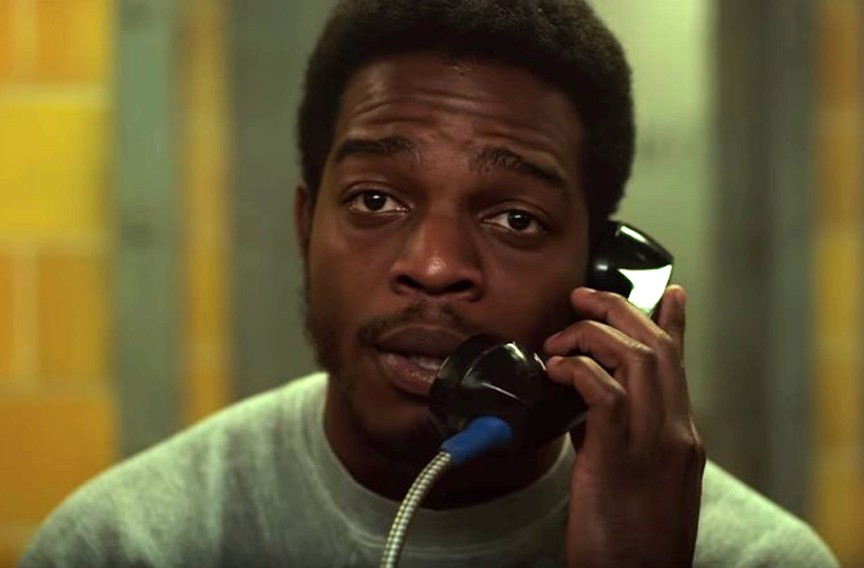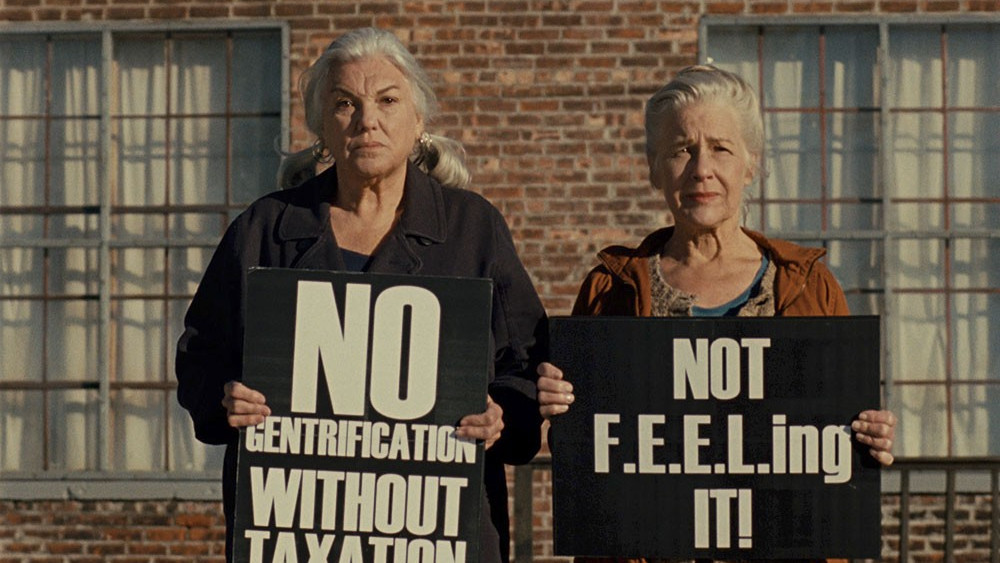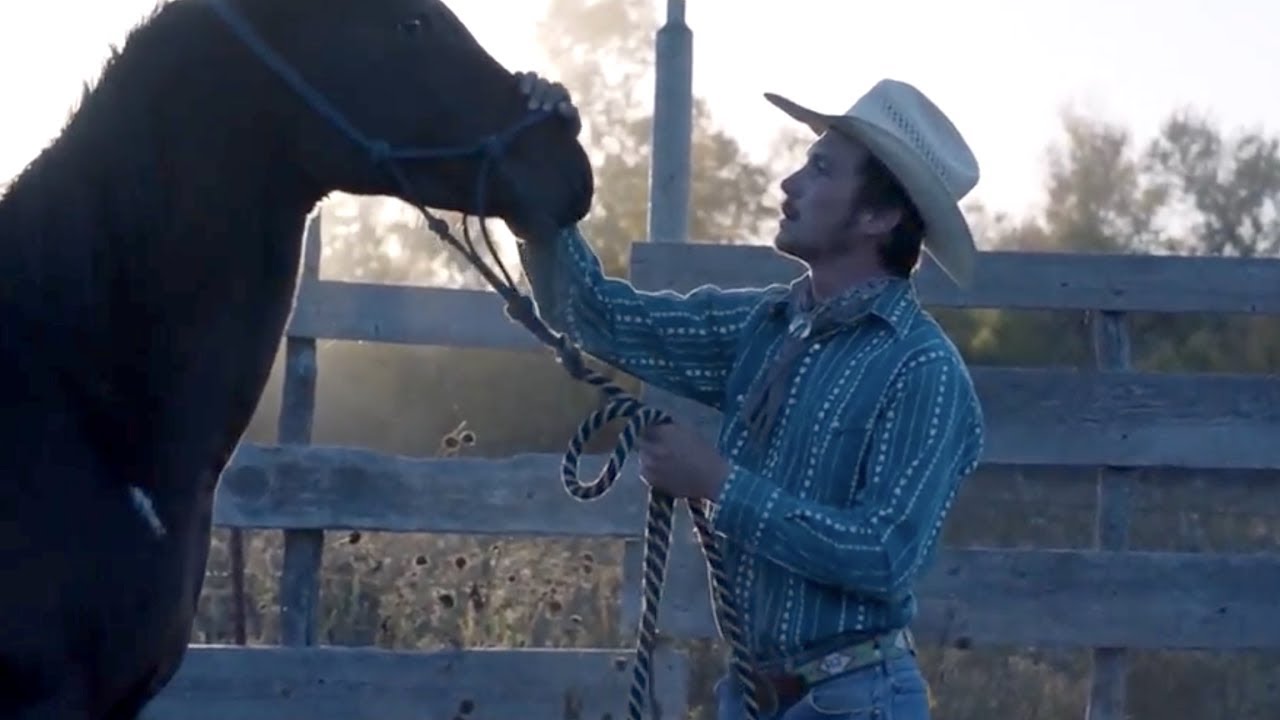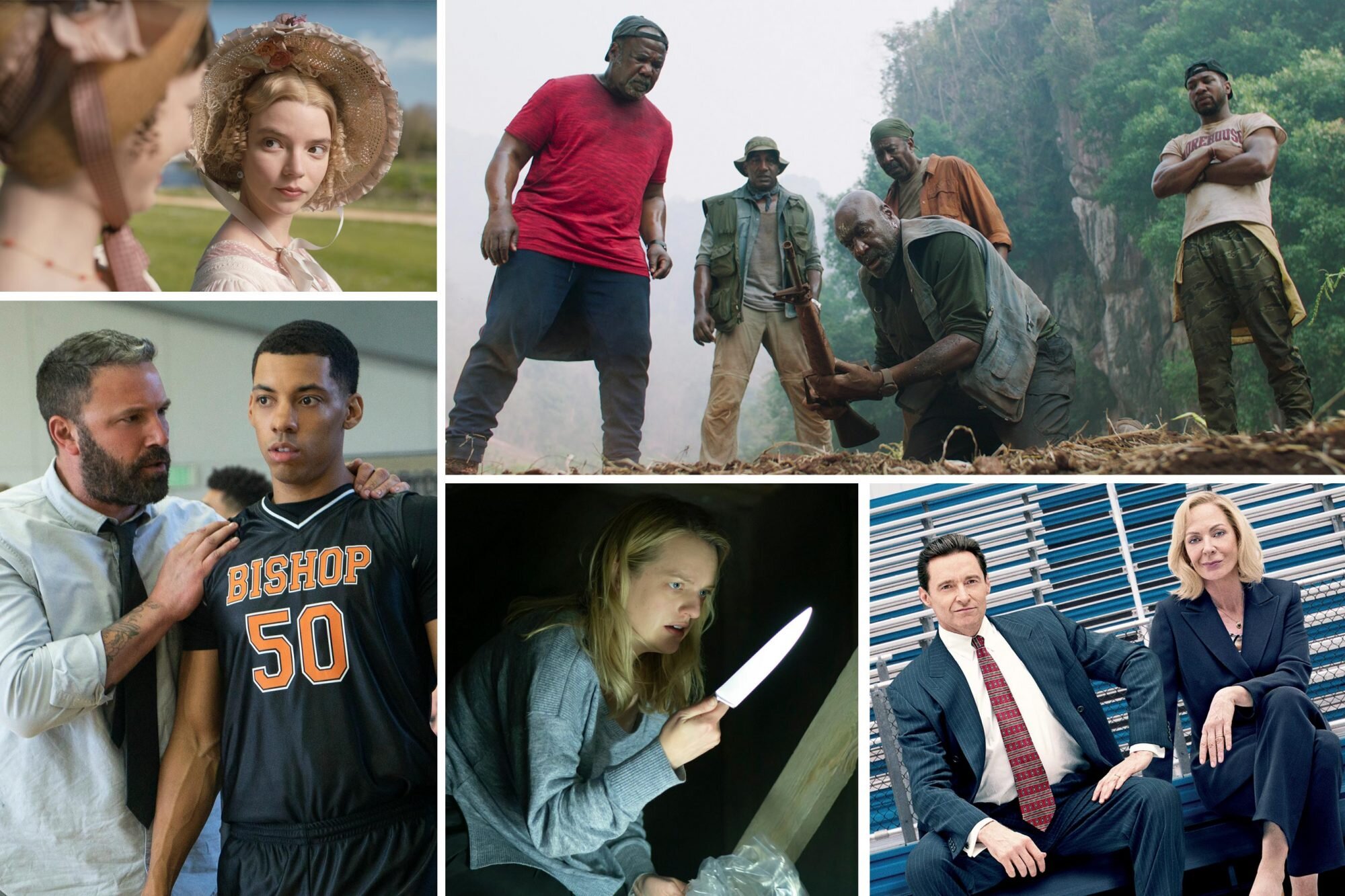Film Essay: Top Ten 2018
In 2013, at a speech at USC, Steven Spielberg predicted an implosion of the film industry; he estimated it would take five years. Well… its has since been five years. Obviously, the implosion hasn’t quite happened yet. The Disney juggernaut that is Disney, Marvel, Pixar, Lucasfilms, and now 20th Century Fox (among other production companies) keeps rolling, raking in record breaking profits. With the gigantic success of both Black Panther and Infinity War (as well as the coming release of Captain Marvel and Avengers: Endgame), they look unstoppable (although the lackluster Solo may give them pause).
When I started reviewing my favorite films of the year, I didn’t have Steven’s prediction on my mind; however, as my choices for the best films of the year came together, I was struck… almost none of them were released by a major studio. In fact, my top two choices were both Netflix productions and an Amazon Prime original made the list as well. Of course, Disney did release the one film on my list that came from a major studio (just another example of their dominance at the box office). All the other films, whether made by famous auteurs (Alfonso Cuaron or Paul Schrader) or new talent (Chloe Zhao or Patrick Wang), were all independent productions. Wow… the times they are a changin.
This year, I go out on a limb. I have chosen films that many people may not have seen, let alone heard of. I chose films that were not released in theaters around me, but I saw on my home TV. These films mainly challenged me, often offering a new way of seeing the world or seeing the world through different eyes. That being said, as I reflect upon the year, in terms of art, I am hopeful. This is a wonderful collection of films, being released in different ways. I miss seeing great films in theaters and hope that theater going will continue.
In fact, the theater experience may be coming to an end, and that is tragic. Seeing movies in theaters is similar to going to church. It is a unique experience in that you are having a personal connection with the “sermon” in front of you, but you are doing it collectively with strangers. But, this is another discussion all together.
Let’s hope while new frontiers allow directors and independent filmmakers more access to audiences that movie theaters survive as well.
Here are my choices for the films that lifted me or challenged me this year.
10. King Lear ****
It has been a while since I have been reminded of either the brilliance of Shakespeare on the big screen (Joss Whedon’s Much Ado About Nothing was the last time) or the brilliance of Anthony Hopkins’ as an actor. This year, King Lear from the BBC and Amazon Prime reminded me of both, like a storm descending upon the ravaged King.
King Lear has long been one of my favorite Shakespeare plays. I like to call it the original Game of Thrones. This is a play filled with political intrigue and complicated layering of a series of betrayals and back stabbings. However, it’s also long when performed in its entirety. Richard Eyre’s cut of the play creates a story that is streamlined and moves with urgency.
Anthony Hopkins as Lear presents a man who is mad with power, a true tyrant, and also a father who has long played favorites, wanting his youngest daughter, Cordelia, to replace him as leader of the largest kingdom. His performance at times is so terrifying that the audience actually feels sympathy for Goneril and Reagan, normally portrayed as monsters. In his best performance since Titus or even Remains of the Day, Hopkins relishes the language of show, even holding end consonants of words to turn them into daggers. “Better thou had’st not been born” holding the “n” in born as a weapon. Emma Thompson and Emily Watson, both Hopkin’s equal in the film, turn in astonishing performances as Goneril and Reagan. Perhaps the best adaptation of Shakespeare I have seen since Kenneth Branagh's Hamlet.
The decision to make Lear’s fool an old man himself, only adds to the visual realization that Lear himself is a fool. Addressing the camera for asides and soliloquies, the film also makes a definite statement with the Gloucester storyline. Edmund is the black bastard son of Gloucester who went into the military, while his white brother becomes and academic and yet is the one praised for his career. Although the Edgar storyline is the one most trimmed by Eyre, the film still works beautifully.
Also… in a time of mad leadership, Lear rings especially true.
9. Black Panther ****
If last year you had asked me: would the Marvel machine, piloted by Disney, make the first mainstream Afrocentric Futurism film?
…
I would have told you I have a bridge to sell you. No way in hell. Well… it happened.
Marvel and Disney deserve credit (dare I say that?) for allowing Ryan Coogler, proving he is one of the great emerging auteurs, total control over his film. Ryan was not simply satisfied with creating an adaptation of Marvel’s Black Panther, but rather, took the opportunity to invent a world that exists completely outside of western influence. Afrocentric Futurism invisions an Africa without western influence, where, left to their own devices, the technology and society would revolve around original African culture and not the hybrid leftover from Western Imperialism. Black Panther is a triumph of design and costume, of imagination and vision, of theme and acting, of storytelling.
Wakanda, the fictional African country that is home to T’Challa, aka the Black Panther, is so complete that even after multiple viewings I still discover something new in the corners of rooms, in the fabric of costumes, in the layers of visuals. Watch how the holograms of the Wakandans’ operate; not using clean lines of light like Tony Starks, but rising out of sand. A tribute to the climate of Wakanda. Or, how the remote controls are actually beads worn around the wrist, again, pushing aside notions of western dress and modern technology. These details fill the screen with their imagination. Everything is new. Everything is originally African. The connection between nature and society reminded me of Native American culture, but again, still wholly African.
The film attempts to bridge the views between T’Challa, a ‘prince’ of Wakanda who must assume the role of King after his father is killed in Avengers: Civil War, and Erik Killmonger, the son of a Wakandan traitor who is raised in Oakland, California. T’Challa has grown up in a world of wealth and privilege. Wakanda cut off from the outside world and ignorant of the circumstances of Africans in western societies across the world. Killmonger emerges as Marvel’s best villain, in that, he is not a villain at all, but a young man convinced of his beliefs from a lifetime of racism experienced growing up in America.
The final fight occurs in an Underground Railroad. Two ideologies are fighting. Although T’Challa wins, Killmonger’s beliefs change T’Challa, moving him from following tradition and keeping Wakanda in isolation to opening the first outreach program in Oakland, where in our reality the Black Panthers founded their first school. This is by far Marvel’s best film.
8. Shoplifters ****
In the beginning of Kore-ada’s latest film, a man and a boy enter a convenience store and using hand signals, and other unspoken language, seem to be doing something we don’t understand, until the boy successfully swipes food and exits. They have done this before. It seems like a ritual.
They are father and son, trying to live in the poor sections of Tokyo. The Japanese society does not deal well, or sometimes at all, with the members of their community that exist in poverty. It is an unfortunate epidemic: the poor elderly dying alone in their apartment. But there are also stories like Kore-ada’s last film, No One Knows, about children who are left by their mother and end up dying in their apartment, which they don’t believe they can leave. In Shoplifters, the way these individuals have found to cope with this immense loneliness is by creating a family.
The father and son we discover are not blood. They are chosen. We meet the mother of the family, who helps and cares for the children. The elderly grandmother, who works at a laundromat and takes “lost” possessions, suggests that this has been a way of life for a while. Then one day, they see another child on their own and decide to adopt them. The problem… that child’s family is still around. This kidnapping and the attempts to find the missing child force this family into the public light.
The film is steeped in blue, color-washed, and depressed. And yet, for the first two thirds of the film, we are so involved with this family that we understand them. We sympathize with them. Just as the Father justifies stealing and teaching stealing to his children by saying that it’s okay to take things from stores because they don’t belong to anyone yet, there is a logical extension then to taking a child. It’s not kidnapping if there is no ransom. This family in some strange way really works and despite their activities we understand and root for them. Then… the final act happens.
Drawing us in to care for these characters, Kore-ada then reveals deep and dark truths about them, causing us conflict, just as the revelations change the family dynamic. In the end, these are some of the most real characters to grace the screen this year in this heart-wrenching story that seems to speak a truth about the nature of family.
7. Leave No Trace ****
Debra Granik’s last film, Winter’s Bone, was my choice for the second best film of 2010 and introduced the world to Jennifer Lawrence. Now, her first film in 8 years, Debra revisits some of the same themes as Winter’s Bone, using her camera to create such a distinctive space that we feel we are part of the environment, and introduces us to Thomasin McKenzie, who I hope has a brilliant career, like Jennifer Lawrence.
The isolation of the community and the family dysfunction in Winter’s Bone, a community destroyed by drug addiction in the Ozarks, here is found in the form of a father and daughter who are survivalists, living in isolation, whose lives are destroyed by the father’s PTSD. Unlike the ending of Winter’s Bone, where Jennifer Lawrence’s odyssey to find her father and save her family’s house concludes with her saving her family, Leave No Trace deals with a young girl coming to realize that her father’s problems should not ruin her life.
This movie begins with the two of them living in isolation. We see that in some ways they have a functioning life, living on the outskirts of society, but even within this “normalcy”, bouts of the father’s anger and insanity surface. Just like in Beasts of the Southern Wild when the community is forced onto the main land, and we see our society through their eyes, when the father and daughter are forced back into our world, it feels foreign and alien.
Granik is a patient artist, allowing her characters to slowly build their own realizations. This is not a movie that falls for the standard manipulations of plot, but rather roams just like the father. It is another powerful take on our society’s inability to help or care for our own citizens, and a brilliant coming of age story.
6. First Reformed ****
With the passing of William Goldman, there could be a convincing case made that Paul Schrader is the greatest living screenwriter. Obviously famous for his collaborations with Scorsese (Taxi Driver, Raging Bull, The Last Temptation of Christ, Bringing out the Dead), we should never forget that Paul Schrader is also a masterful director. His great accomplishments include Hardcore, American Gigolo, Mishima, and Affliction. Almost all of his films deal with the darker side of men (specifically men) and their inability to find or seek forgiveness for their violent actions. Now, he gives us his latest masterpiece First Reformed.
First Reformed feels like a film that Scharder has been working towards his entire life. Obviously influenced by so many famous directors, none more so the Bresson, Schrader connects the forbidden sinful nature of films, in this case a Reverend’s life, and the desire for redemption. The main character, brilliantly portrayed by Ethan Hawke who continues as he grows older to take more and more ambitious and difficult roles, Reverend Ernst Toller, drinks alone. He is isolated despite having a large congregation. He has lived a life of “sin” that has now resulted in his isolation.
Having been a military chaplain, he convinces his son to go to Iraq. His son dies, his marriage falls apart, and he falls into depression. Having to console others is supposed to give him hope, but it does not. In fact, while consoling a young man who believes that our world is ending, Reverend Ernst Toller actually ends up becoming more convinced of humanity’s own impending doom.
Schrader’s style may be maddening to some. He fills the film with long takes of empty places and silences, reminding us visually of the emptiness of the world and the struggle that Toller undergoes. Like most of his films, there is no “happy ending” at the end of this. He asks us to contemplate what Toller goes through and how his film is a reflection of the world in which we live.
5. If Beale Street Could Talk ****
I can think of no director better than Barry Jenkins to tackle a James Baldwin adaptation. James Baldwin remains one of the great American writers. A poet and philosopher whose soul touched all of those who were outcasts, but specifically the African American community and the gay community.
The central image of this film is a glass wall that separates a pregnant girlfriend, Tish Rivers (a glowing Kiki Layne) and her boyfriend and father of her child, Alonzo ‘Fonny’ Hunt (an incredible Stephen James). Alonzo is wrongly convicted of a crime. Tish visits him. Through this glass, unable to touch each other or connect with each other, the two still exude love and hope. Their chemistry is amazing. The glass is a symbol of the divide that keeps people apart. That keeps African Americans behind bars.
Barry Jenkins, using his signature style of having actors talk directly into the camera, sets up a situation where Fonny and Tish are talking to each other, but they are also talking to the audience. There is great power in having each of these lovers look longing into the camera as if they are talking to us. But we are also separated from them by the screen. And yet through it all, there is connection.
Thankfully, the film does not keep these two lovers apart as it weaves backwards through time to their love and romance before his imprisonment. Sometimes this could be a gimmick, but instead, it fits with the ebb and flow of music. James Baldwin was greatly influenced by jazz and Barry Jenkins once said, “all characters deserve a full orchestra.” Using the flashback, Jenkins allows his characters to use every instrument of the orchestra. A great sense of humor runs through the entire film, even in some of the darkest of times.
The film is a reminder that the barrier is real and exists. That the struggle continues, but, that even within this struggle they (and thus we) can remain hopeful and in love.
4. Bread Factory, Part I: For the Sake of Gold and Bread Factory, Part II: Walk with me a While ****
Patrick Wang is the most exciting young filmmaker currently working. He has directed only 4 films (although he has written a few more). All of them rank as four star films and each would have made my top ten lists, if I had seen them when they came out. I didn’t see In the Family when it first came out, but it is a masterpiece. The Grief of Others made my list in 2015. Now, he has made by far his most ambitious film. Bread Factory, Part I and II is made in the same spirit as The Wire, James Joyce’s The Dubliners, Robert Altman’s Short Cuts, and Fellini’s Amarcord. Each of these films or TV shows is about a town. The town is the main character. Here, in two films that can be seen independently of each other and would still be great, Patrick Wang creates a fictional town, Checkford in upstate New York as real as any town in our world. Here is the stage for interweaving stories of the many characters who populate the screen.
The first film is more serious, although has wonderful moments of comedy. The second more blurs the line of fantasy and reality, bringing in fun and fancy flights like scenes from Amarcord. The nexus of culture in Checkford is The Bread Factory, an arts center founded by a couple: Dorothea (Tyne Daly in the best performance of the year) and her partner, Greta (Elizabeth Henry). As usual, Tyne Daly plays Dorothea as a force of nature. She not only owns and runs the Bread Factory, she is the stage director as well. Her partner, Greta, an actress who reflects an elder Ingrid Bergman: beautiful, controlled, charming, and subtle.
The film opens with a more recent development in the town: The Bread Factory has a rival. A new arts center has just opened across town, doing more glitzy and pointless performances, that visually stun, but leave the audience empty. This is the state of art in modern America. Having to fight for their survival, Dorthea must convince the city counsel to continue to fund their education portion of their program. Knowing someone who actually runs a theater festival for a small town, this is one of the most realistic portrayals of the struggle of artists to continue to put on art. For some reason, we always seem to have to equate art and profit together.
While this is happening, Dorothea decides to put on “Hecuba”, a Greek tragedy, translated by a scholar who lives in Checkford, Else (Nana Visitor). Here’s where we get complicated… so hang with me: The rival facility’s owner, Karl (Trevor St. John) tries to blackmail Dorothea to abandon her attempt to secure city council funding. Karl is producing his own production of a Chinese production called May Ray (Janet Hsieh and George Young).
Back in Dorothea's production of “Hecuba”, she has cast a famous old English Actor, Sir Walter, as one of the leads. A local library assistant, Julie, is also starring in the play. She is followed around by Max, who is in love with her. Max is being mentored by the local journalist Jan who is investigating everything. The translator, Elsa, is married to Jason, who is a school union representative, involved in Dorothea’s education program. He also happens to be having an affair with Mavis, a city council member whose husband, Sam, runs the local watering hole. Julie, previously mentioned, is their daughter.
Phew… you tired yet? This is a large ensemble cast representing a true town. Patrick Wang uses this small city as a microcosm for both the state of art in America, the purpose of art in life, and America as a whole. What an ambitious film.
3. The Rider ****
In trying to think of how to describe the style of Chloe Zhao’s The Rider, I immediately thought of Terrence Mallik, Zhang Yimou, Federico Fellini, Louis Malle, and then I stopped myself. Wow, the fact that I would instinctively compare her to these great and distinctively different directors should be all you need to hear to want to see this film. This is only her second movie and it is made with a confidence rarely found in sophomore films.
The Rider is equal part cinematic poetry, drama, and documentary. It reminds me of cinema verite and Italian Neo-Realism in terms of casting non-actors in all of the roles and even basing the “screenplay” on exact events of their life. And yet, it’s also a brilliantly written film, sculpted from reality, but fictional in terms of dialogue and some events. But also shot on a South Dakota reservation in such a way to evoke Terrence Mallik. This is the American countryside as we have never seen. Hauntingly beautiful and hauntingly empty.
Brady Jandreau, playing a version of himself, Brady Blackburn, is a true discovery. His performance, one of the best of the year, comes effortlessly. Brady’s love and passion is breaking in horses, but, he has recently been thrown and suffered a severe head trauma. So much so that, he has been told he should never ride again. These events come from Janreau’s actual life. His best friend, Lane (played by real life paraplegic Lane Scott) represents both Brady’s fear, in losing his abilities, but also his hope in that Lane without being able to speak and without the ability to use his legs still wants to ride. Lane’s message is simple… Brady needs to keep riding, even in Lane’s state he wants to.
The fact that this is one of the best American films to be made in years; the fact that it was made on a Native American reservation; the fact that this movie about masculine identity as made by a woman; and the fact that it was made by a Chinese immigrant makes this movie even more dazzling than it already is.
2. The Other Side of the Wind ****
There are moments in this maddenly frustrating film where I had to stand back in awe at the genius of Orson Welles. History continues to debate whether the cinematographer, Gregg Tolan who himself helped usher in deep focus photography, was the true eye behind Citizen Kane or whether it was Orson Welles himself. In a rather unusual moment of humility, I once heard that Orson Welles said that Tolan did most of the work; Orson simply didn’t know enough about film not to ask to attempt to create shots that others thought were impossible. I don’t quite buy his humility. I believe without a doubt that Citizen Kane could not have been made without Tolan, but I also believe, it could not be made without Welles either.
Orson Welles, like few other directors (Terrence Mallik, Stanley Kubrick, Kar Wong Kai, Akira Kurosawa, and Andrei Tarkovsky) simply see the world in a way that most do not. That realization and the genius of how Welles sees the world fills the frame in The Other Side of the Wind. The changing aspect ratio and film stock could drive one made, but it is a denunciation of Hollywood, stuck in their standard methods.
John Houston, playing a stand in for Orson Welles, via an Ernest Hemingway impression, plays a director trying to finish his final work, which Hollywood refuses to fiance. The metafictional element only adds to the surreal nature of this final masterpiece.
The film within the film obviously deals with the sexuality of fantasy, Hollywood, and film in general. At one point, Goddard is quoted in the film as whether film is a reflection of reality, or reality is a reflection of the camera, or whether life is a reflection of sexuality. Certainly sexuality dominates this film, but, in a manner that more has to do with the creation of fantasy / reality. Hitchcock once said that all film is a voyeuristic experience, as we use the camera to see parts of people’s lives that in reality are left unseen, creating a fantasy that in many ways feels more real than reality. Using the camera “to make love” to the audience’s mind is not a new idea, but certainly, it is effective and so well done in this film. Ultimately, the movie while frustrating is also undeniably brilliant.
1. Roma ****
Watching Roma, I felt the same way as when I first saw Au Revoir Les Enfants or Cleo from 5 to 7 or The 400 Blows. I imagine this is what people felt like watching Godard's Breathless for the first time. I myself have never been a great fan of that film, but, hearing those who love it talk about it, I feel the same way about Roma.
As all art can be considered one artist’s voice in a specific time (the present), created in a specific location, it is not as if Roma is not uniquely Alfonso Cuaron’s vision, set in memory of his own childhood in Mexico, while still evoking the dangers of our changing world today; and yet, the film feels like an art piece made in the French New Wave of the 1970’s (same era the film takes place in). The New Wave challenged our notion of what is cinema and brought incredibly personal and at times real films to the screen. Truffaut’s 400 Blows remains of it’s great examples. Roma has the energy and passion, the love and experimentation, the visuals and performance of a film from the French New Wave. Cuaron even named his protagonist, the maid of a wealthy family in Mexico during 1970, Cleo to reference Agnes Varda’s masterpiece Cleo from 5 to 7.
Roma is about so much, and yet, in plotting, it seems to be about so little. The plot seems to be a year in the life of a family of Sofia and Antonio, who Cleo works for. It is indeed an eventful year, but there doesn’t seem to be a connection through the at times seemingly random and shocking events. What ultimately, I believe Roma to be about is how people deal with a changing world.
Cleo, a maid, has her personal life turned upside down when she discovers that she is pregnant. She asks Sonia, the mother of the house and her employer, for advice, and also seeks out the young man she believes to be the father. He tells her never to speak to him again. Left alone, she returns to work, and sometimes the plot purposefully veers away from her journey where a more Hollywood film would make it the sole focus of the film.
The family at one point goes on vacation to try and avoid dealing with Sonia’s marriage which is falling apart and Cleo’s pregnancy. Retreating to a beautiful coastal house, they try to put off their changing personal lives around them. Of course, they can’t put it off. They discover Antonio having an affair. Cleo gives birth in a extremely powerful and devastating scene.
Just as the family cannot escape their own issues and the changing times in their own lives, the world also continues to knock at their door. We witness a fire and with it the symbol of something old being destroyed. We witness the youth protests and the violence of both the police and the paramilitary group, Los Halcones, even learning that one of Cleo’s friends has joined them. Danger comes to the family, both from the outside world and from within. But, the family “survives”. Yes, a marriage falls apart. Yes, a baby dies. But they are still together and there will be another year.
I think this is where Cuaron’s incredible connection with the present occurs. I have to believe that this movie, made now, is inspired by the events of today. We watch hopelessly and helplessly as the world around us continues to change. In this film, the innocence of their lives before 1970 are destroyed, and yet, they continue. It is both powerfully depressing and poignant. A masterpiece.
Runners Up: Spider-man: Into the Spider-Verse ****, Won’t You be my Neighbor? ****, Burning ****, 8th Grade ****, The Ballad of Buster Scruggs ****, BlacKkKlansman ****, Blindspotting ****, Mandy *** ½, Green Book *** ½, Fail State *** ½, Zama *** ½, The Favourite *** ½, A Quiet Place *** ½, Crazy Rich Asians *** ½, RBG *** ½, Vice *** ½
Best Actor: TIE: Anthony Hopkins, King Lear and John Houston, The Other Side of the Wind
Runner Up: Ethan Hawke, First Reformed
Best Actress: Tyne Daly, Bread Factory Part I and II
Runner Up: Thomasin McKenzie, Leave No Trace
Best Supporting Actor: Steven Yuen, Burning
Runner Up: Michael B. Jordan, Black Panther
Best Supporting Actress: Regina King, If Beale Street Could Talk
Runner Up: Michelle Yeoh, Crazy Rich Asians
Best Cinematography: TIE: The Rider, The Other Side of the Wind
Runner Up: Alfonso Cuaron, Roma
Best Animated Film: Spider-man: Into the Spider Verse ****
Best Score: Nicholas Britell, If Beale Street Could Talk
Runner Up: Ludwig Goransson, Black Panther
Best Editing: Alfonso Cuaron and Adam Gough, Roma
Runner Up: Dan Ferrell, King Lear
Best Production Design: Hannah Beachler, Black Panther
Runner Up: Fiona Crombie, The Favorite
Best Original Screenplay: This has never happened before… I cannot decide. So here are my favorite three: Alfonso Cuaron, Roma; Chloe Zhao, The Rider; Patrick Wang, A Bread Factory Part I and II
Runner Up: Paul Schrader, First Reformed (How great a year for writing is it when Paul Schrader is the runner up?!)
Best Adapted Screenplay: Barry Jenkins, If Beale Street Could Talk
Runner Up: Charlie Wachtel & David Rabinowitz and Kevin Willmott & Spike Lee, BlacKkKlansman
Best Director: Alfonso Cuaron, Roma
Runner Up: TIE: Chloe Zhao, The Rider and Orson Welles, The Other Side of the Wind
Most Overrated Film of the Year: A Star is Born ***
Most Underrated: Fail State *** ½
Biggest Disappointment: Isle of Dogs **
Worst Film of the Year: (this is of the films I have seen. Haven’t seen a ton of bad movies in theaters this year) Bohemian Rhapsody * ½
As always for another view, my favorite film critic at work Grouch Reviews top ten list is here:
http://grouchoreviews.com/features/260


